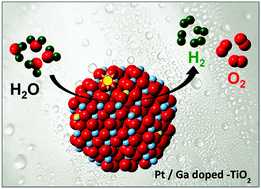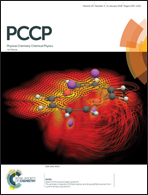Enhanced, robust light-driven H2 generation by gallium-doped titania nanoparticles†
Abstract
The splitting of water into molecular hydrogen and oxygen with the use of renewable solar energy is considered one of the most promising routes to yield sustainable fuel. Herein, we report the H2 evolution performance of gallium doped TiO2 photocatalysts with varying degrees of Ga dopant. The gallium(III) ions induced significant changes in the structural, textural and electronic properties of TiO2 nanoparticles, resulting in remarkably enhanced photocatalytic activity and good stability for H2 production. Ga3+ ions can act as hole traps that enable a large number of excited electrons to migrate towards the TiO2 surface, thereby facilitating electron transfer and charge separation. Additionally, the cationic dopant and its induced defects might introduce a mid-gap state, promoting electron migration and prolonging the lifetime of charge carrier pairs. We have discovered that the optimal Ga dopant concentration was 3.125 at% and that the incorporation of platinum (0.5 wt%) as a co-catalyst further improved the H2 evolution rate up to 5722 μmol g−1 h−1. Pt not only acts as an electron sink, drastically increasing the electron/hole pair lifetime, but it also creates an intimate contact at the heterojunction between Pt and Ga-TiO2, thus improving the interfacial electron transfer process. These catalyst design strategies provide new ways of designing transition metal photocatalysts that improve green fuel production from renewable solar energy and water.



 Please wait while we load your content...
Please wait while we load your content...